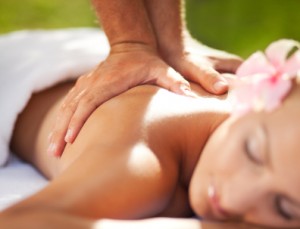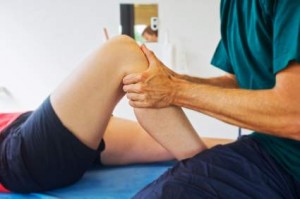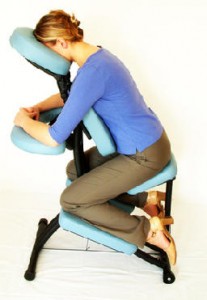Therapeutic Massage
Deep Tissue Massage
Deep tissue massage is a type of massage aimed at the deeper tissue structures of the muscle and fascia, also called connective tissue. Deep tissue massage uses many of the same movements and techniques as Swedish massage, but the pressure will generally be more intense. It is also a more focused type of massage, as the therapist works to release chronic muscle tension or knots (also known as “adhesions.”)
Will A Deep Tissue Massage Hurt?
It shouldn’t hurt, but it’s likely to be a bit more uncomfortable than a classic Swedish massage. You should always feel free to speak up if the pressure is too much for you.
It’s important to drink a lot of water after a deep tissue massage to help flush lactic acid out of the tissues. If you don’t, you might be sore the next day. It’s possible that you might feel some soreness the day after a deep tissue massage even if you DO drink water.
How Fast Will I Get Results With A Deep Tissue Massage?
It’s important to be realistic about what one deep tissue massage can achieve. Many people ask for more pressure, thinking that if the therapist just pushes hard enough, they can get rid of all their knots in an hour. This just won’t happen. In fact, undoing chronic knots and tension built up over a lifetime is best achieved with an integrated program that includes exercise, work on your posture and ways of moving, relaxation techniques and a regular program of massage.
Sports Massage
Sports massage was originally developed to help athletes prepare their bodies for optimal performance, recover after a big event, or function well during training. Sports massage emphasizes prevention and healing of injuries to the muscles and tendons.
But you don’t have to be in the Olympics to benefit from sports massage. Sports massage is also good for people with injuries, chronic pain or restricted range of motion. The Therapist generally concentrates on a specific problem area. (Sore neck and shoulders, anyone?) This is the type of sports massage that you see in the spa.
What Happens During Sports Massage?
Sports massage is a type of Swedish massage that stimulates circulation of blood and lymph fluids. Some sports massage movements use trigger point therapy to break down adhesions (knots in the muscles) and increase range of motion.
There are four types of sports massages:
- pre-event sports massage — a short, stimulating massage 15 – 45 minutes before the event. It is directed toward the parts of the body that will be involved in the exertion.
- post-event sports massage — given within an hour or two of the event, to normalize the body’s tissues.
- restorative sports massage — given during training to allow the athlete to train harder and with less injury.
- rehabilitative sports massage — aimed at alleviating pain due to injury and returning the body to health.
When Should I Get A Sports Massage?
A sports massage is a good choice if you have a specific problem — a tender knee from running, for instance. It is also be a good idea to see a movement therapist, who can help you identify and correct the movement pattern that might be causing your injury in the first place.
The therapist generally focuses in on the problem area — a frozen shoulder or pulled hamstring, for instance — rather than giving you a full-body massage.
Sometimes men who are new to the spa are more comfortable getting a sports massage because it sounds more masculine. That’s fine, even if they don’t have an injury.
Chair Massage
Chair massage is a short massage, anywhere from five to 30 minutes, done through the clothing. It typically focuses on key tension areas in the back, neck, shoulders and arms.
A professional practitioner performs it in a specially designed ergonomic massage chair. They were originally referred to by its creator, David Palmer, as “on-site massage” since the massage chairs were portable and were usually brought into a workplace. However, this kind of onside massage service is now more commonly referred to as simply “chair massage” and sometimes as “seated massage”.
They are performed in all kinds of environments. Most people know about the service as a corporate massage service, although probably only half of all of them are done in the workplace. Retail chair massage, either done in massage stores or as stand alone massage booths or massage kiosks is becoming increasingly common.
What are the Benefits of Chair Massage?
One of the benefits of them is that it takes a service that is typically done behind closed doors and makes it visible to the public. Because it is done out in the open, people getting them know exactly what to expect. They can see who is doing the massage and what they are doing.
Another benefit of chair massage is that it is done over the clothing. Many people feel uncomfortable getting undressed for traditional massage that is done on a table. With seated massage, people can avoid the discomfort and awkwardness that they may feel having to disrobe.
The sessions are usually shorter than traditional massage making it very convenient for anyone to fit into their schedule. And because the sessions are shorter, the cost for a chair massage is relatively low.
These benefits make chair massage a safe, convenient and affordable. It’s no wonder that more people are introduced to massage through chair massage than through any other massage technique.
Indy Muscle Therapy
- 8770 Guion Rd., Suite L Indianapolis, IN 46268
- 317.997.7416
- [email protected]
- Google Map
- Contact Form
Recent Posts
- Arthritis?
- 5 Tips for Active Aging
- What is NeuroKinetic Therapy?
- Active Isolated Stretching (AIS) with Aaron Mattes – YouTube
- 50% of Office Workers have Shoulder & Neck Pain
- Forward Head and Rounded Shoulders
- Postural & Muscle Imbalance
- Sway Back, Lumbar Lordosis & Pelvic Tilt
- Benefits of Kinesio Taping



